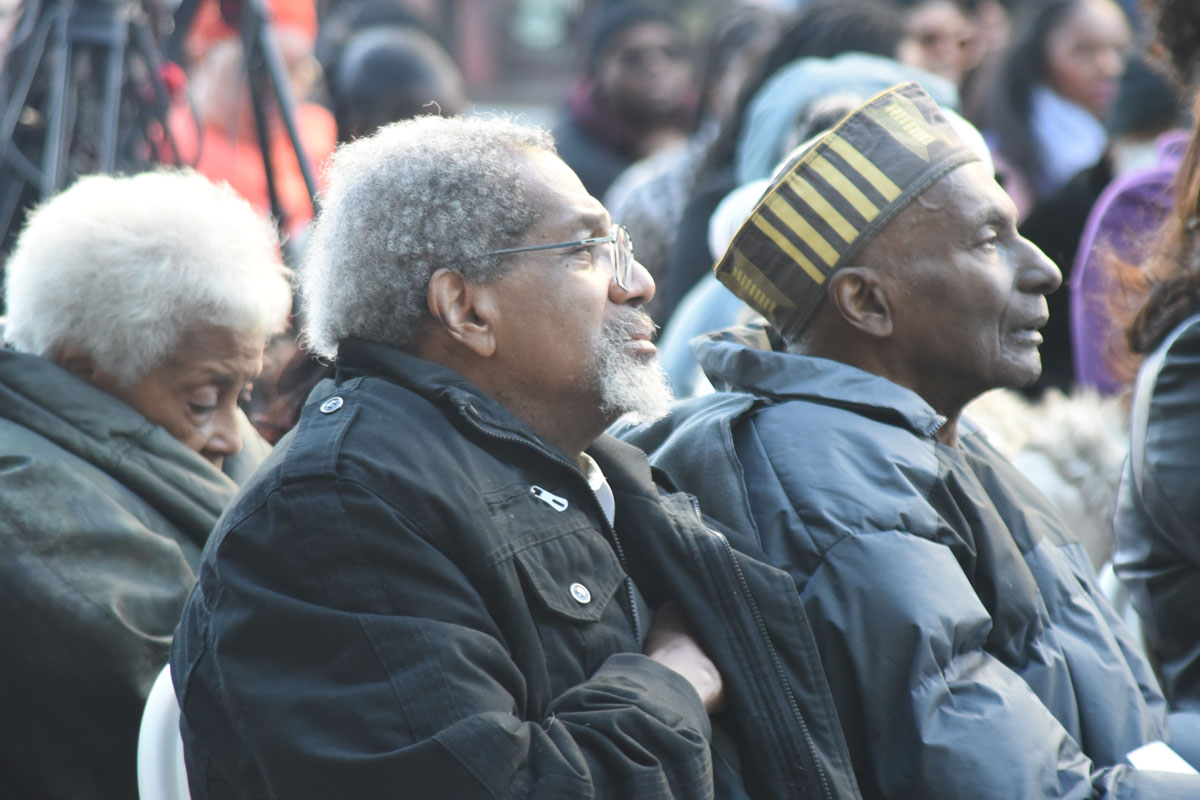Arts-Theater
Community Preservation

Brooklyn’s Ancestral African Presence
is at Home on Harriet Tubman Blvd: From Africa to Brooklyn: Cultural Museum of African Art: Eric Edwards Collection Opens in Bed Stuy
By Nehemi’EL Simms
On Saturday, November 18th, 2023, at Bed Stuy Restoration Plaza (BSRP) in Bed Stuy, about 100 people gathered to celebrate and commemorate an event that many people agreed will change Bed Stuy forever: the opening of the Cultural Museum of African Art Eric Edwards Collection (CMAAEEC).
Eric Edwards, Founder and Executive Director of the Cultural Museum of African Art (CMAA), is an African Art collector who managed to amass over 3,000 pieces of art that represent 4,000 years of African history from all 54 countries on the continent of Africa, over a period of 50 years. His collection, which was once housed in his Bed Stuy apartment, was converted into a museum and valued at around $10 million, and is now available to the public at Bed Stuy Restoration Plaza.
Growing up in Bed Stuy, Mr. Edwards cites his main inspiration for pursuing this wonder as the need to “give something back to the village that raised him.” When asked about his recipe for success, he was quick to put emphasis on “respect” for his “image and history” and entreated young African people to “learn as much about yourself as you can.”

In his eyes, the museum is an ode to the “contribution of African civilization to the world,” and he said with dogged determination that young African people “must know that.”
His sentiment about the resurrection of African civilization was echoed by respected pan-African scholar and activist Dr. Leonard Jeffries, who was present with his family. When asked about his take on the significance of the CMAA, Dr. Jeffries alluded to the fact that this museum represented, among other things, the “dawning of a great African Renaissance.”
He defined this “African Renaissance ‘’ as a rise of the “prominence of the African Family,” which will serve as a cultural basis for other forms of self-determination and self-respect of African people the world over. Dr. Jeffries also pointed to the Monument De La Renaissance Africaine, a bronze statue perched on a hill in Dakar, Senegal, as another symbolic gesture to lend credit to his idea.
During the historic day, foreign dignitaries, academics and educators, local politicians, as well as ordinary Bed Stuy’s residents were visibly shaken up by the moment. The energy in the room, where the initial viewing of some of the art pieces and the beginning remarks were made, was sizzling, and a palpable unity of emotion was represented on everyone’s face. However, the energy of the space was highlighted by the presence of so many ambitious young African people who were sure to soak in the gravity of the moment.
One of them, named Ciara, a 19-year-old college student studying African Music, was visibly moved as she gazed upon an African statue enshrined in a glass casing.
“We really need this as a world,” she said. Upon further discussion, she revealed that she was currently studying the African influence on world culture, particularly that of Cuba and the United States. Her position was that the “history and culture of the world is better understood when the history and culture of Africa is given it’s respect. And in illuminating African culture, the CMAAEEC is doing a service to all of humanity.”
When asked how the museum was impacting her personally, she responded that she felt “proud to know” her Ancestors were being “represented and honored in the heart of Bed Stuy,” a cultural hub in its own right.

The main ceremony took place outside, where libations were poured to memorialize the legacy of African people, and those seminal to the success of the project spoke. Among the speakers were President and CEO of Restoration Corporation, Blondel A. Pinnock; early supporter of the museum, and Sierra Leonean Ambassador to the United States, Sidique Yai; as well as NYS Assemblywoman Stefani Zinerman.
All shared what the museum meant to them and stories illustrating the trials and tribulations that came along with executing the project, but were unified in their acknowledgment of the moment’s magnitude concerning the upliftment of the self-respect of the young African people of Bed Stuy and for generations to come.
“This museum is a monument to the preservation of African history,” said Assemblywoman Zinerman who represents the 56th District and who played a seminal role in securing public funding for the endeavor. She added that the CMAA will “allow us to control the narrative of our history, image, and culture.”
World-renowned architect Rodney Leon, Head Architect for the CMAA, remarked with satisfaction that it was “owned and operated by African people.” When asked about the opportunities that the CMAA created, he acknowledged the inherent favorable economic circumstances generated but chose to focus on the “spiritual and cultural sustainment” that the museum would facilitate for the people of Bed Stuy.












